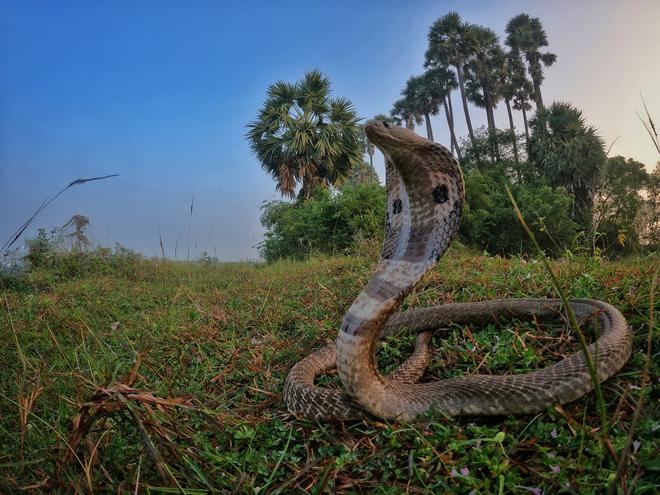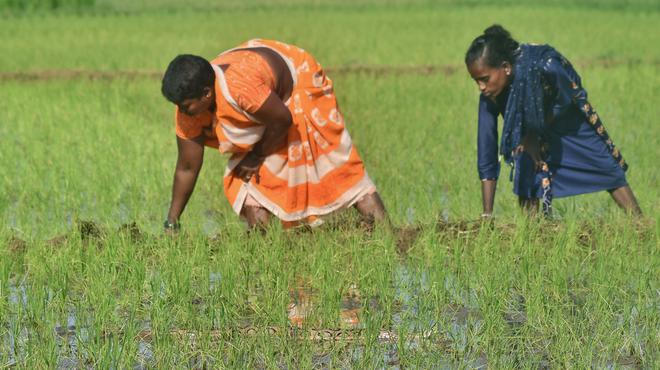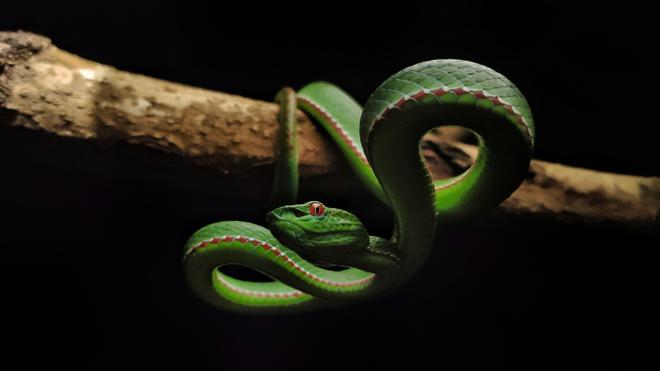In India, we have nearly 300 species of snakes, most of which are harmless. But there are some deadly ones that kill thousands of people. These snake bites can be avoided. While 15 species of snakes kill humans, just four of them account for the majority of deaths in India – Russell’s viper, saw-scaled viper, krait and spectacled cobra.
The World Health Organization estimates that between 81,000 and 1.38 lakh people around the world die each year from snakebite and up to four lakh are permanently disabled or disfigured as a result of being bitten by venomous snakes. In India alone, 58,000 people die due to snakebites making it the snakebite capital of the world.
“Knowing the habits of these snakes and taking steps to avoid encounters with them can save many many lives,” says award-winning wildlife conservationist Romulus Whitaker, founder of Madras Crocodile Bank Trust (MCBT).
A short film by MCBT called Four Deadliest Snakes of India – A Survival Guide highlights how learning about these snakes can mitigate the problem of snakebites to a large extent. “For several centuries, humans have been living with snakes. Snakes were looked down upon as evil and vengeful creatures, mainly due to the myths that revolve around them. On most occasions, when people come close to snakes the consequences could be fatal for both,” says Ch Gnaneswar, Project Lead at the Madras Crocodile Bank.
On September 19, a coalition of organisations working on global health and snakebite prevention around the world, including Madras Crocodile Bank Trust and Centre for Herpetology celebrated five years of International Snakebite Awareness Day with an aim to raise awareness on the huge, yet mostly unrecognised, global impact of snakebite.

Over the past two years MCBT has been working in collaboration with other NGOs and herpetologists to carry out educational programmes in Andhra Pradesh, Bihar, Jharkhand, Madhya Pradesh, Maharashtra, Odisha and Tamil Nadu and the north-east – all of which are prone to snakebites.
On a cloudy morning in Visakhapatnam in Andhra Pradesh, a classroom brimming with enthusiastic students watch with keen interest a documentary on the most venomous snakes of India. This is followed by a session where the students identify snake species through pictures displayed by a team of naturalists. The programme is one among the many being conducted by the Wildlife Conservation Through Research and Education (WCTRE) and AP Forest Department in collaboration with MCBT to spread awareness on snakebites. “All together, around 850 students from schools and colleges and the residents of Madugula village were briefed in detail about the diversity of snakes in Visakhapatnam, their nature of venom and measures to respond to snakebites,” says Yagnapathy Adari, project scientist of Kambalakonda Wildlife Sanctuary.
Eastern Ghats
The Eastern Ghats is home to a great number of serpents and Visakhapatnam has all the ‘big four’ venomous snakes of India. “Many species were described from the coastal city of Visakhapatnam during the colonial era, making the city a type locality for species like the common krait, bamboo pit viper, brahminy blind snake, and trinket snake,” explains Yagnapathy. Although Visakhapatnam hosts diverse snake species, only a few are notably venomous. Only six species of snakes possess venom among the 24 found in Visakhapatnam. “Through our awareness programmes, we highlight ways to mitigate snakebites and also make people aware of the ecological importance of snakes,” says Vivek Rathod of WCTRE. In the last few years, WCTRE rescued more than 300 snakes from various parts of Visakhapatnam. “On September 22, we are planning to conduct a training workshop for frontline staff of forest department to standardise snake rescue techniques,” adds Vivek.
Apart from the snake rescuer programmes conducted by MCBT in association with its partner NGOs in various States, it also uses art as a tool to educate the young minds. “We paint the walls of government schools as well as community halls, educating students, teachers and parents about the four main snakes that are medically relevant as well as the dos and don’ts for preventing snakebites. Wall paintings prove highly effective as they captivate the local community and impart important knowledge,” says Gnaneswar.
Accidental encounters

Cobras thrive on agricultural fields where rats, their favourite prey are plentiful. Fields become danger zones because of this. This is where unsuspecting humans can encounter snakes accidentally. India’s most deadly snake is the Russell’s viper and it is quite difficult to detect them. To stay safe one should avoid walking on dry leaves in areas known to house this species. “In India, we live with snakes. Snakebites are preventable accidents and it’s time that the right information and help reaches the villages where most snakebites happen. People need to learn how to avoid the few snakes that are dangerous and what to do if bitten. There is only one cure for venomous snakebite and that is antivenom,” says Romulus.

According to Gnaneswar, antivenom in India is a classic case of one size fits all. “Venom is collected only from three districts of Tamil Nadu. But the venom characteristics change significantly, even in the same species, with geographical variations. The other challenges include lack of infrastructure and staff issues at primary health centres where most snakebite victims are taken and inadequate taxonomic studies,” says Gnaneswar.
A new serpentarium
In order to bridge the gap, Madras Crocodile Bank Trust is planning to set up a serpentarium in Chennai where snake species from across India will be kept for venom collection to preserve the anti-venom quality.
A recent short film titled Snakes and Snakes Bites in the North East made by Society for Nature Conservation Research and Community Management and Madras Crocodile Bank Trust was screened at a webinar by World Health Organization International. The film highlighted this gap in developing a range of antivenoms and getting the treatment within the golden hour.







